
The picture refers to the first stay of Gauguin in Tahiti. A young Tahitian with an ax hung over his head is a real impression that the artist experienced while walking early in the morning along the shore of the ocean. It is described in his diary Noah Noah: “On the shore of a man, almost naked, next to him a tall coconut tree. With his elegant and flexible movement, the man lifts a heavy ax with both hands, leaving his blue glow on top of a silvery sky background, below – his mark on dead tree..
The pose of the Tahitian with an ax in the picture repeats the figure from the ancient frieze of the Parthenon, a photograph of which Gauguin took with him to Tahiti. The Tahitian inscription “Matamoe” in the lower right corner by Googen itself was translated as “Death”. The explanation for such a name for such a magnificent, festive landscape can be found in Gauguin’s books: he wrote that the sight of Tahitians chopping trees aroused in him the feeling of the death of a civilized man and the birth of a “savage”.
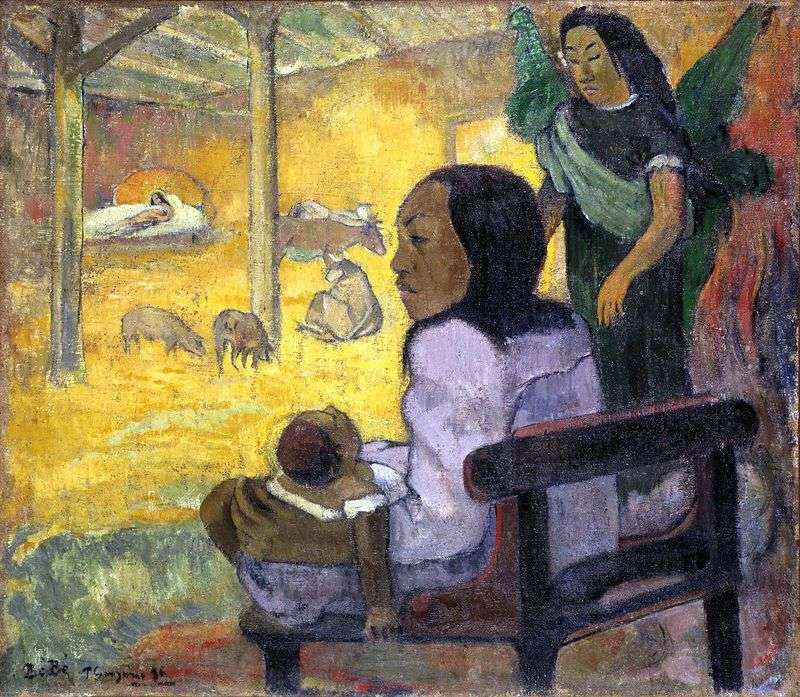 Child (Christmas) by Paul Gauguin
Child (Christmas) by Paul Gauguin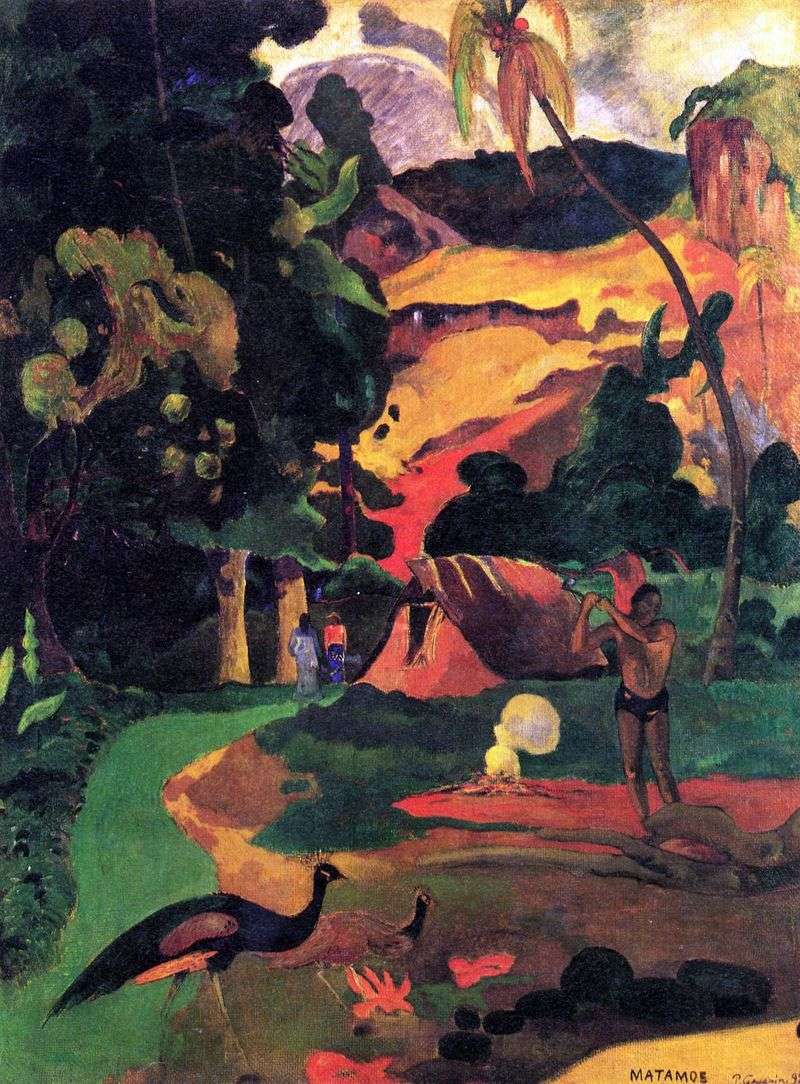 Landscape with peacocks by Paul Gauguin
Landscape with peacocks by Paul Gauguin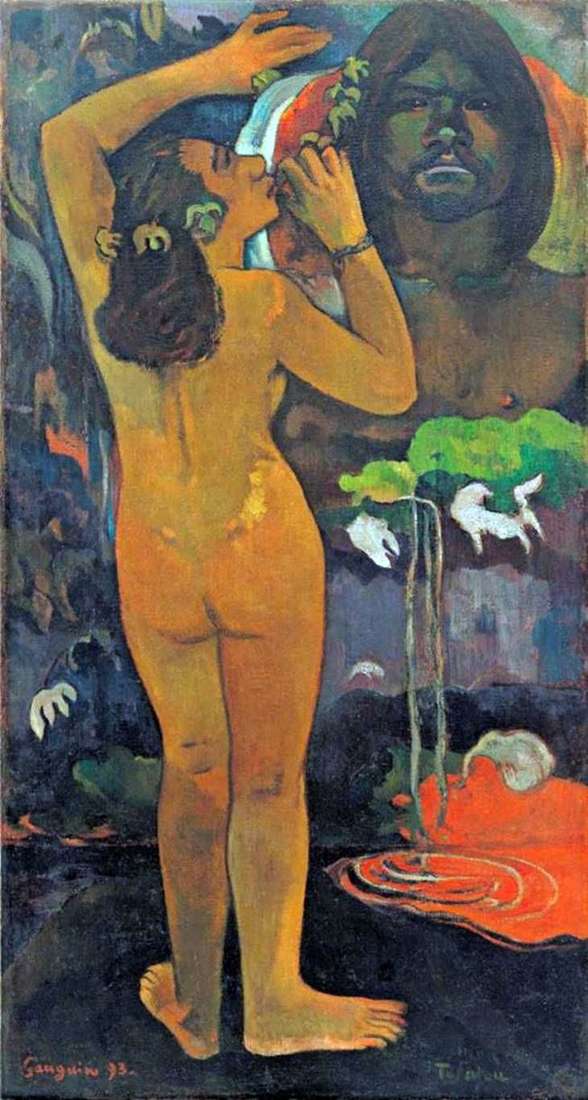 Hina, the goddess of the moon and Te Fatu, the spirit of the earth (Moon and Earth) by Paul Gauguin
Hina, the goddess of the moon and Te Fatu, the spirit of the earth (Moon and Earth) by Paul Gauguin A Wonderful Spring (Sweet Dreams) by Paul Gauguin
A Wonderful Spring (Sweet Dreams) by Paul Gauguin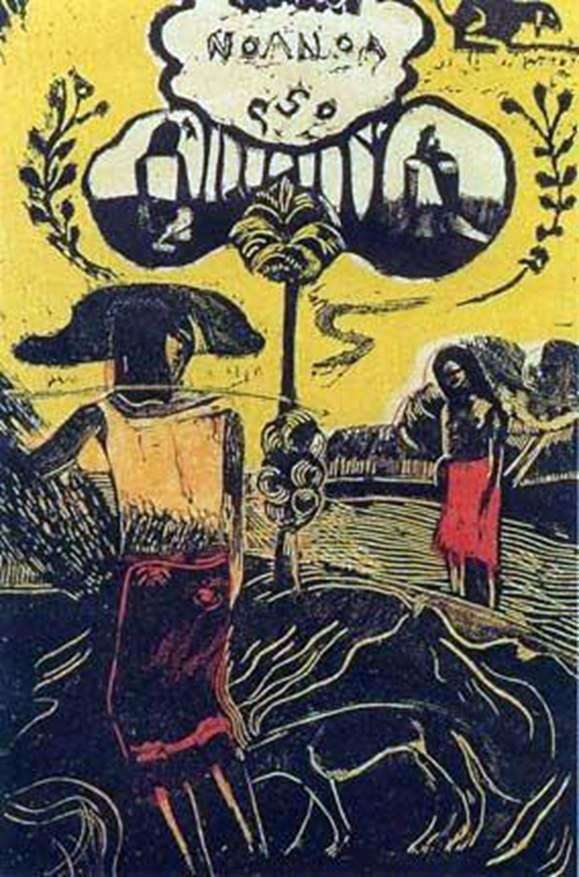 Engravings by Paul Gauguin
Engravings by Paul Gauguin Large bouquet of flowers and Tahitian children by Paul Gauguin
Large bouquet of flowers and Tahitian children by Paul Gauguin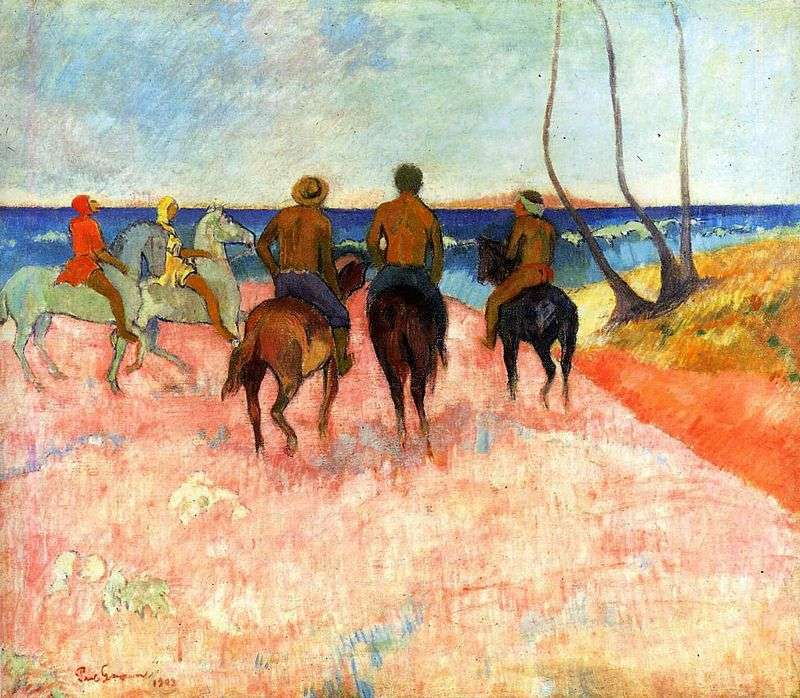 Riders on the shore by Paul Gauguin
Riders on the shore by Paul Gauguin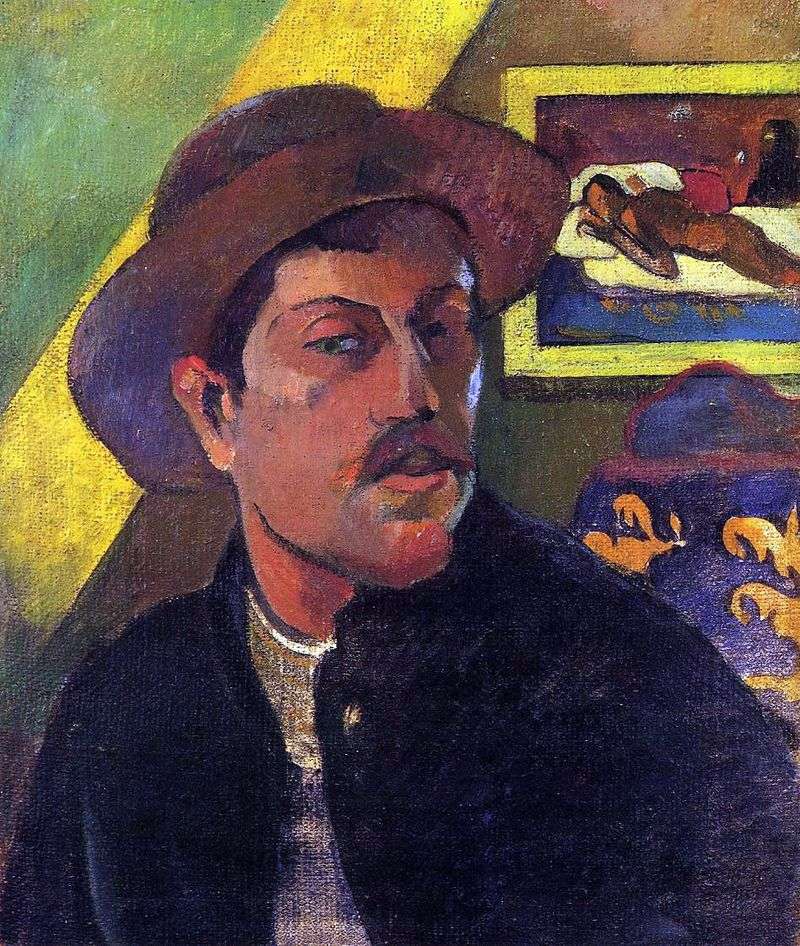 Self-Portrait in a Hat by Paul Gauguin
Self-Portrait in a Hat by Paul Gauguin